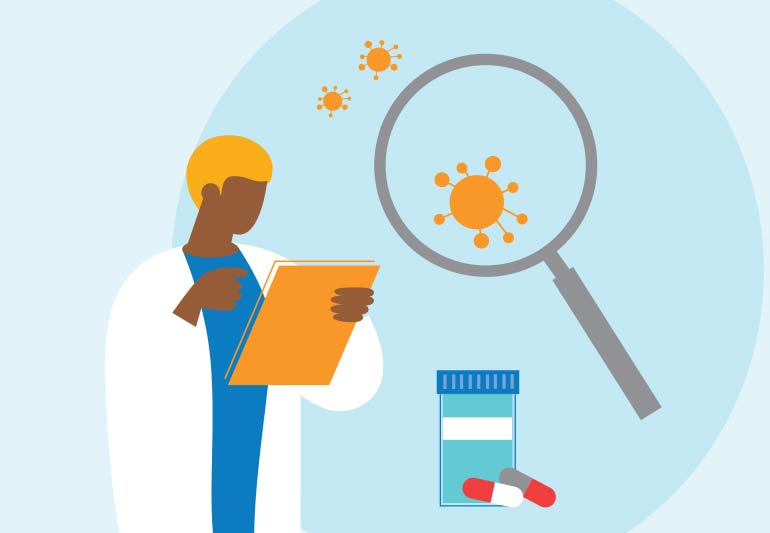The term sexually transmitted infections (STIs) is now the correct name for what many people still call sexually transmitted diseases (STDs), or venereal diseases (VD). They are something nobody wants, and nobody wants to talk about, but health care professionals hope that learning about them will help you avoid ever having to deal with them.
The 3 major causes of STIs
Bacteria — The most common are chlamydia, gonorrhea, and syphilis.
Viruses — These include herpes simplex virus (HSV), human papillomavirus (HPV), hepatitis B, or hepatitis C.
Parasites — Examples are trichomonas vaginalis, or insects such as crab lice or scabies mites.
STIs spread through sexual activity – intercourse, oral, anal, or other sexual activity. STIs are still transmittable even if there is no ejaculation. Some STIs are even transmittable without having sex. Sharing contaminated needles during drug use and using contaminated body piercing or tattooing equipment can spread infections such as HIV, hepatitis B, and hepatitis C.
Once someone is infected by an STI, even if he or she doesn’t have any symptoms, they can spread the infection to other people through oral, vaginal, or anal sex. You may not know whether the person you’re having sex with has an STI. Looking at the genitals for signs of infection is not a way to identify and prevent the spread of STIs.
Some STIs (gonorrhea, chlamydia, HIV, syphilis, and HPV) can pass from mothers to their infants during pregnancy or delivery, causing severe illness or death. All pregnant women should check for these infections, sometimes more than once during a pregnancy.
Risk factors for STIs
Anyone who is sexually active risks getting an STI. A person doesn’t have to have sexual intercourse for it to happen. You need to know the risk factors for STI – then ask yourself if you are doing all you can to minimize your risk for contracting an STI.
Unprotected sex — Vaginal or anal penetration by an infected partner who is not wearing a latex condom dramatically increases the risk of getting an STI. Improperly worn condoms or intermittent use of condoms can also increase risk.
Multiple partners — The more people with whom you have sexual contact, the greater your risk. The risk increases dramatically with more than three partners in a lifetime.
A personal history of STIs — Having one STI makes it much easier for another STI to grab hold and flourish.
Sexual assault and rape — These are among the most devastating events a sufferer can endure. It’s even more devastating when the victim gets an STI, which can last a lifetime, cause infertility, or even result in death. Victims should immediately go to a large hospital’s emergency room, which will have the materials for collecting evidence. The doctor will assess injuries, test for STIs, and offer treatment in advance of test results. Many communities have sexual assault response teams (SART) to immediately provide an advocate and companion who gives emotional support for patients during their examination, STI screening, evidence collection, and treatment.
Misuse of alcohol or use of recreational drugs — These interfere with your judgement and dull your inhibitions, making you more willing to participate in risky behaviors you wouldn’t consider with a clear head. They can impair your ability to defend yourself or to escape from a perpetrator of assault or rape.
Injecting drugs — Sharing needles can transfer very serious infections, such as HIV, hepatitis B and hepatitis C.
Younger age — Half of newly diagnosed STIs occur among people between 15 and 24 years of age.
Ways to prevent STIs
There are several ways to avoid or reduce your risk of getting STIs:
Abstinence — The most effective way to avoid STIs is to not have sex. That means all sex – oral, anal, genital, and other contact.
Have one uninfected partner — Another reliable way of avoiding STIs is to stay in a long-term relationship in which both people have sex only with each other and neither partner has an infection. Avoid sexual contact with a new partner until you have both take a test for STIs.
Vaccination — Ideally, vaccination should come prior to ever having sex. Vaccines are available to prevent human papillomavirus (HPV), hepatitis A, and hepatitis B.
Health care experts recommend that both girls and boys at 11 or 12 years of age receive the HPV vaccine. Children can receive the vaccine as early as age nine. If not vaccinated at ages 11 and 12, the Centers for Disease Control and Prevention (CDC) recommends getting the vaccine through age 26.
Usually, the hepatitis B vaccine is given to newborns, with two boosters during the first year. The hepatitis A vaccine is given at a baby’s first birthday. Both vaccines are recommended for people who aren’t already immune to these diseases and for people who are at increased risk of infection, such as IV drug users.
Use condoms correctly — Use a new latex condom for each sex act, whether oral, vaginal, or anal. When you use a condom, don’t use lubricants, spermicides, or other products made with oil or petroleum, such as Vaseline. They cause microscopic holes in the latex through which bacteria and viruses can pass.
Condoms made from natural membranes are not recommended because they’re not effective at preventing STIs. Non-barrier methods of contraception, such as birth control pills or intrauterine devices (IUDs), don’t protect against STIs. Diaphragms are also ineffective at preventing STIs.
Do not drink alcohol excessively or use recreational drugs — Even one drink can impair your judgement and lower your inhibitions. You are more likely to take sexual risks. If you are in a bar, don’t leave your drink unattended. If you’re distracted, someone could put a drug or toxin into your drink (e.g. a ‘date-rape’ drug).
Communicate — Discuss STI protection methods and contraception with your partner before you have any sexual contact. Make sure you agree on what activities are acceptable and not acceptable.
Symptoms
STDs or STIs have a broad spectrum of signs and symptoms. Some have no symptoms early in the course of the disease and remain undetected until complications occur, or a partner is diagnosed.
These signs and symptoms may indicate an STI and should be evaluated:
Sores or bumps on the genitals or in the oral or anal areas
Burning or painful urination
Penile or vaginal discharge
Unusual or malodorous vaginal discharge
Unusual vaginal bleeding
Uncomfortable or painful sex
Tender, enlarged lymph nodes, especially in the groin or head and neck, but swollen lymph nodes may be widespread
Lower abdominal or pelvic pain
Fever
A rash on the trunk, hands, or feet
Symptoms or signs may appear within a few days after exposure. However, it may take years before you have any noticeable problems, depending on the type of STI. It is possible to have two or more STIs simultaneously.
Complications
Because many people in the early stages of an STD or STI experience no symptoms, screening for STIs is important to prevent complications. For females, screening often is done at the time of an annual exam.
Possible complications include:
Long-lasting mild to severe pelvic pain
Complications during a pregnancy
Inflamed eyes
Arthritis
Pelvic inflammatory disease (PID)
Infertility
Heart disease
Some cancers, such as those associated with HPV infection of the cervix or rectum
If you believe you may have a sexually transmitted infection or have any concerns at all, you should never hesitate to reach out to your doctor.
Discovered on: 2023-03-07 21:33:58
Source: STDs are now STIs – Here’s everything you need to know about these infectio…



